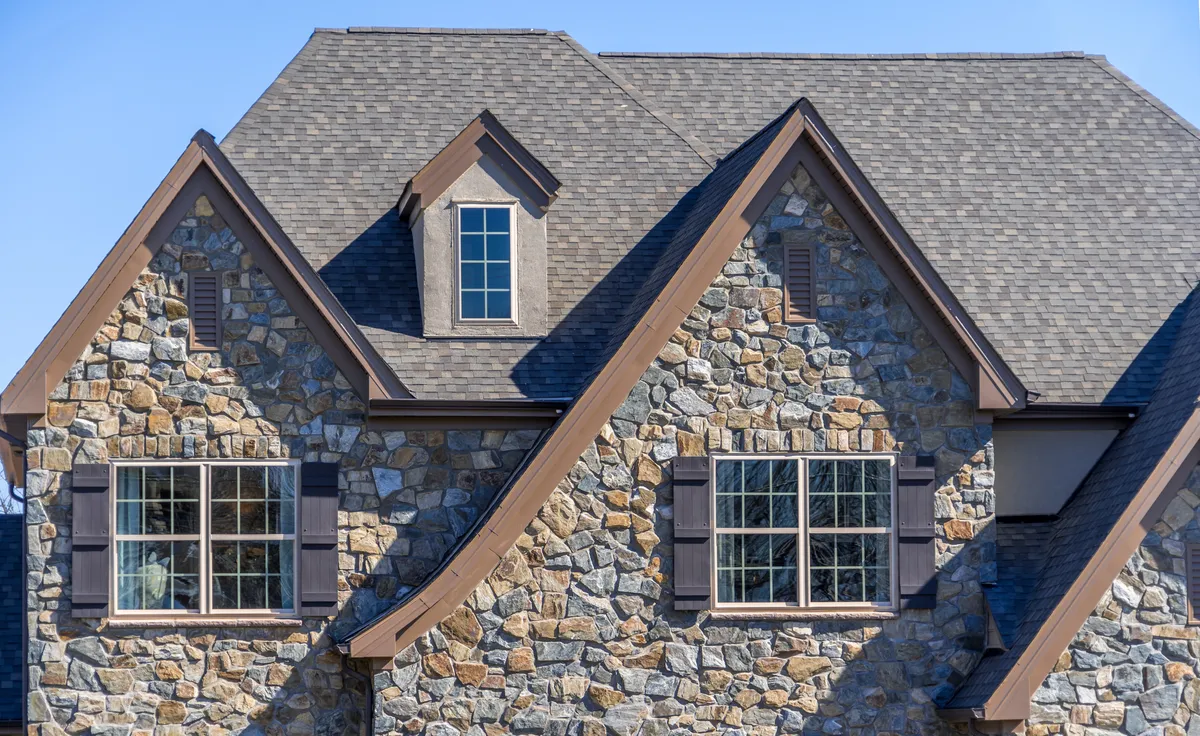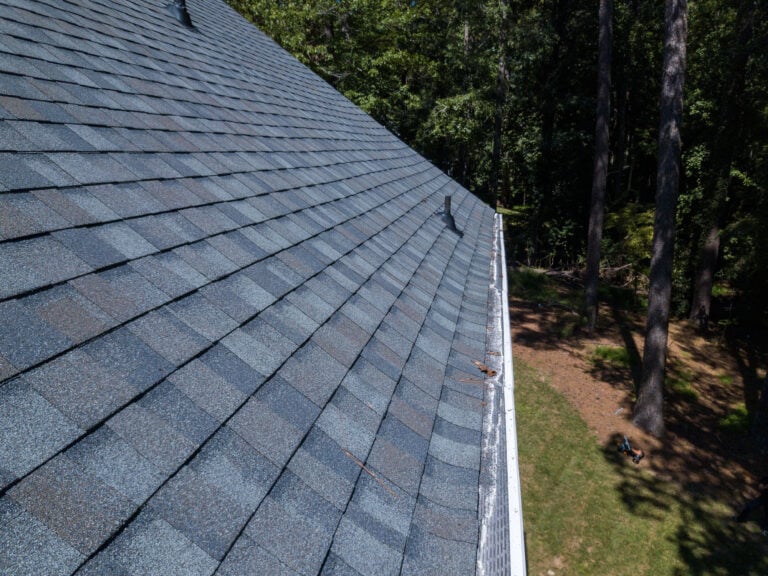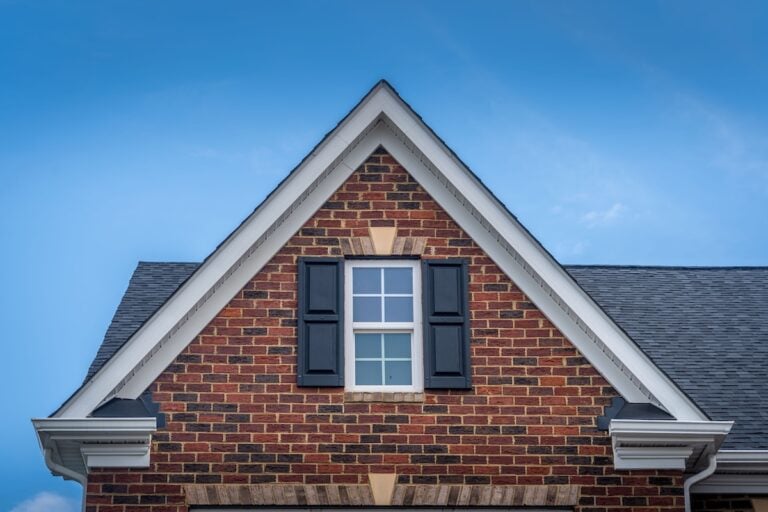When it comes to home maintenance, one area that often goes unnoticed is the roof eaves. These critical components of your home’s architecture serve more than just an aesthetic purpose; they play a vital role in protecting your home from various elements and maintaining structural integrity.
In today’s guide, we’ll explore:
- What roof eaves are
- Their benefits
- Types
- Maintenance tips to keep your home safe and beautiful
What are Roof Eaves?
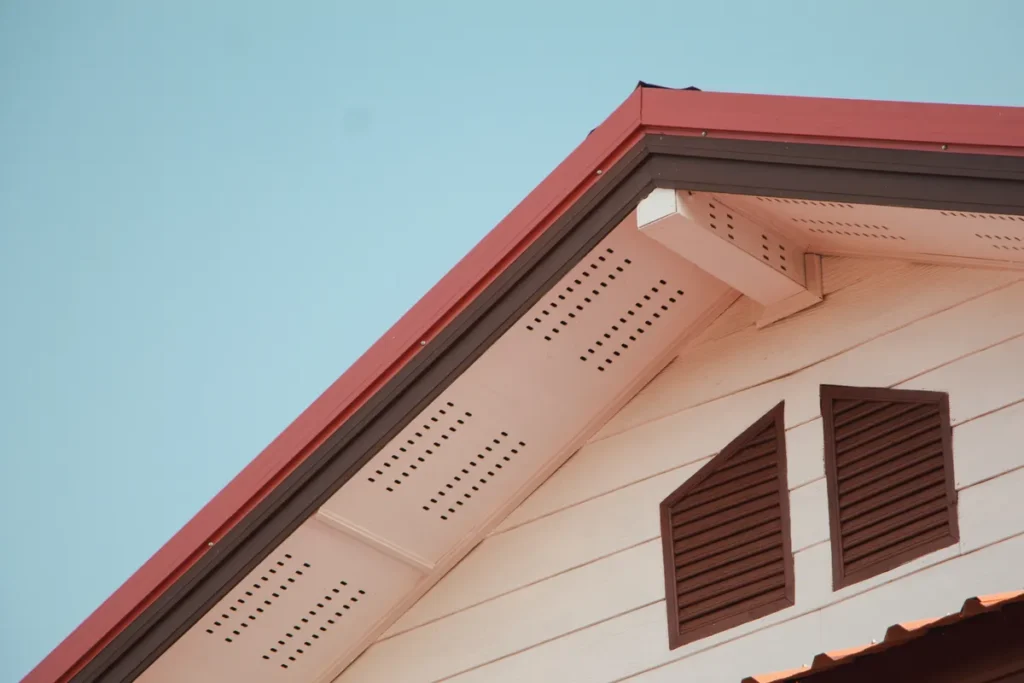
Roof eaves refer to the overhanging edges of the roof that extend beyond the exterior walls of a building. They form a crucial part of the roofing system, providing both functional and aesthetic benefits. Eaves consist of several components, including:
- Soffit: The underside of the eave, which can be ventilated to allow airflow into the attic.
- Fascia: The vertical board that caps the end of the rafters, often used to attach gutters.
- Eave Troughs (Gutters): Channels that collect and direct rainwater away from the house.
The combination of these elements ensures that your home remains protected from weather conditions and maintains proper ventilation by integrating a well-designed roof structure.
The Importance of Roof Eaves
Understanding the common causes and signs of roof eave damage is crucial for homeowners to maintain their roof eaves and prevent further issues.
Roof eaves are important for several reasons, including:
Protection from Weather Elements
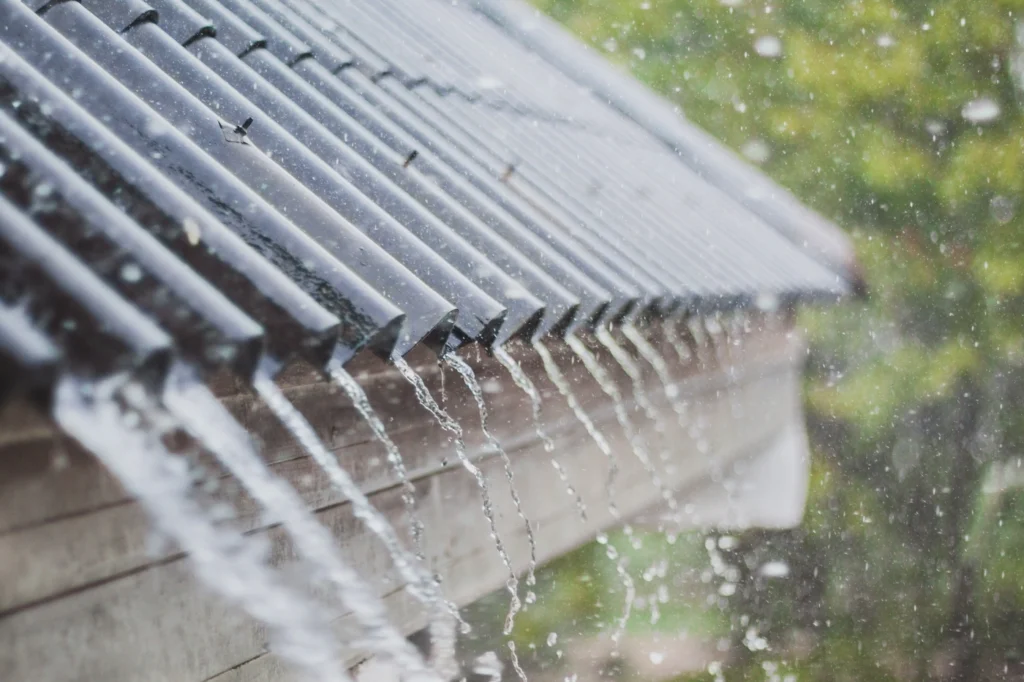
One of the primary functions of roof eaves, including the eave overhang, is to protect your home from weather-related damage. By extending the roof over the exterior walls, eaves help to:
- Shed Rainwater: Properly designed eaves direct rainwater away from the walls and foundation, preventing water infiltration and damage.
- Block Sunlight: Eaves can provide shade to windows and doors, reducing heat gain during hot months and protecting against sun damage.
- Prevent Snow Accumulation: In colder climates, eaves help manage snow load on the roof, preventing excessive build-up that can lead to structural issues.
Structural Integrity
Eaves contribute to the overall structural integrity of your home by protecting the underlying structure and:
- Supporting Gutters: Eaves provide a secure mounting point for gutters, ensuring effective water drainage.
- Protecting Siding: By directing water away from the walls, eaves prevent water damage to siding materials such as wood, vinyl, or brick.
- Enhancing Ventilation: Ventilated soffits allow air to circulate in the attic, reducing moisture build-up and preventing mold and mildew growth.
Aesthetic Appeal
Beyond their functional benefits, roof eaves, including box eaves, also contribute to the aesthetic appeal of your home. Well-designed eaves can enhance the architectural style and add character to your property. They can be customized with various materials, finishes, and decorative elements to match your home’s design.
4 Types of Roof Eaves
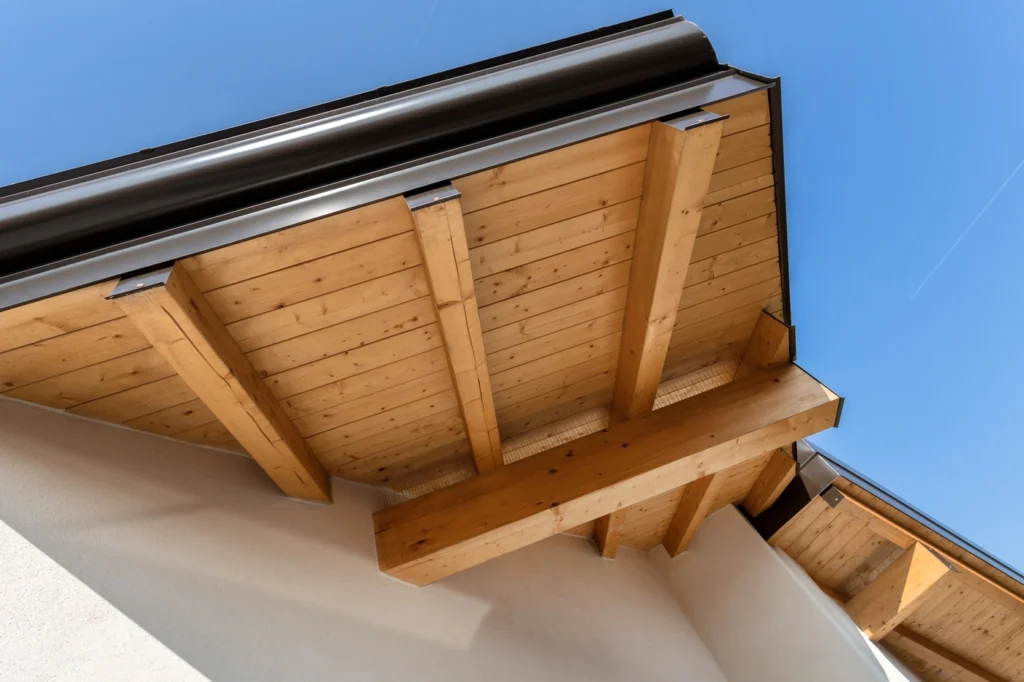
Understanding the different types of roof eaves can help you make informed decisions when building or renovating your home. Exposed eaves, which lack a soffit and showcase visible rafters and roof structures, are also a popular option for a rustic aesthetic while other types of roof eaves may offer other charms. The main types of roof eaves include:
1) Open Eaves
Open eaves are characterized by exposed rafters and beams that extend beyond the exterior walls. This type of eave is commonly found in traditional and rustic architectural styles. While open eaves can add charm to your home, they may require more maintenance to prevent issues such as insect infestations and weather-related damage.
2) Closed Eaves
Closed eaves, also known as boxed eaves, feature soffit eaves that enclose the underside of the overhang. This design hides the rafters and beams, providing a clean and finished look. Closed eaves are low-maintenance and offer better protection against pests and weather elements.
3) Decorative Eaves

Decorative eaves combine functionality with artistic design elements. These eaves often feature intricate detailing, brackets, and moldings that add visual interest to your home’s exterior. While decorative eaves can enhance curb appeal, they may require more frequent upkeep to maintain their appearance.
4) Overhanging Eaves
Overhanging eaves extend significantly beyond the exterior walls, providing maximum protection from rain and sun. This type of eave is commonly used in modern and contemporary architectural styles. Overhanging eaves can also create shaded outdoor spaces, enhancing the comfort and usability of patios and decks.
Materials for Roof Eaves
Selecting the right materials for your roof eaves is essential for durability, aesthetics, and maintenance, especially to prevent issues like wood rot caused by frequent exposure to harsh weather conditions. Some common materials include:

- Wood: Wood is a traditional and versatile material for roof eaves. It can be painted or stained to match your home’s exterior and offers a warm, natural look. However, wood requires regular maintenance to prevent rot, insect damage, and weathering.
- Vinyl: Vinyl is a popular choice for roof eaves due to its low maintenance and durability. It is resistant to moisture, insects, and UV rays, making it a long-lasting option. Vinyl eaves are available in various colors and styles, allowing for easy customization.
- Aluminum: Aluminum eaves are lightweight, durable, and resistant to rust and corrosion. They are easy to install and require minimal maintenance. Aluminum can be painted to match your home’s color scheme, offering both functional and aesthetic benefits.
- Fiber Cement: Fiber cement is a composite material made from cement, sand, and cellulose fibers. It is highly durable, fire-resistant, and requires minimal maintenance. Fiber cement eaves can mimic the appearance of wood, providing a traditional look without the associated upkeep.
- Composite Materials: Composite materials, such as engineered wood or PVC, offer a balance of durability and aesthetics. These materials are designed to withstand weather conditions and require less maintenance compared to natural wood. They are available in a range of finishes and styles to suit different architectural preferences.
Maintenance Tips for Roof Eaves
Proper maintenance of roof eaves is essential to ensure their longevity and functionality. Here are some tips to keep your eaves in top condition:

- Regular Inspections: Conduct regular inspections of your roof eaves to identify any signs of damage, such as cracks, water damage, or insect infestations. Addressing issues early can prevent further deterioration and costly repairs.
- Cleaning Gutters: Clean your gutters regularly to prevent clogs and ensure proper water drainage. Clogged gutters can lead to water overflow, which can damage the eaves and the exterior walls.
- Painting and Sealing: If you have wooden eaves, apply a fresh coat of paint or sealant every few years to protect the wood from moisture, UV rays, and pests. Choose high-quality, weather-resistant products for the best results.
- Checking for Pests: Inspect your eaves for signs of pest activity, such as nests, droppings, or chewed wood. If you notice any issues, contact a pest control professional to address the problem promptly.
- Ventilation Maintenance: Ensure that your soffit vents are clean and unobstructed to maintain proper airflow in the attic. Proper soffit ventilation helps prevent moisture build-up, mold growth, and uncomfortable indoor temperatures.
Common Issues with Roof Eaves
Despite their importance, roof eaves can encounter several issues that homeowners should be aware of. It is crucial to replace roof eaves when significant damage occurs to protect your home from water damage and maintain structural integrity. Some common problems include:
💧 Water Damage
Water damage is one of the most common issues with roof eaves. This can occur due to clogged gutters, improper drainage, or damaged roofing materials. Water damage can lead to rot, mold growth, and structural instability.
🐦⬛ Pest Infestations
Pests such as birds, squirrels, and insects can make their homes in your roof eaves. These infestations can cause damage to the eaves and create entry points for further pest problems inside your home.
💨 Poor Ventilation
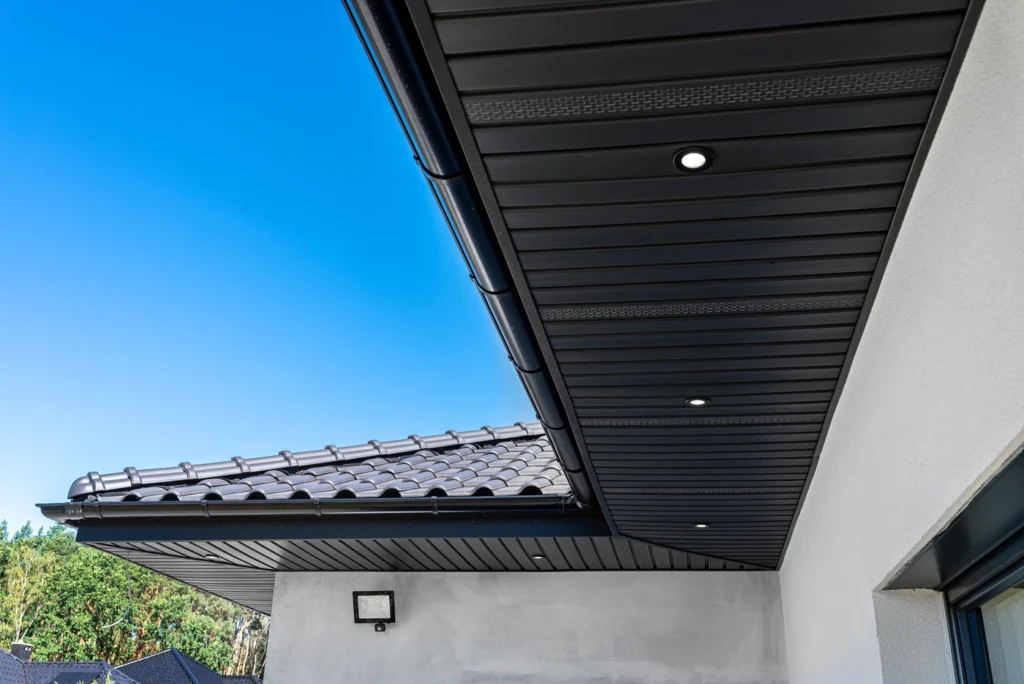
Inadequate ventilation in the attic can result in moisture build-up, leading to mold and mildew growth. Properly ventilated soffits help maintain a healthy attic environment and prevent moisture-related issues.
🎨 Cracked or Peeling Paint
Cracked or peeling paint on wood eaves can expose the underlying wood to moisture and UV damage. Regular maintenance, including painting and sealing, can prevent this issue and prolong the life of your eaves.
🏚️ Structural Damage
Structural damage to the eaves can occur due to factors such as heavy snow loads, strong winds, or poor construction. Regular inspections and timely repairs can help maintain the structural integrity of your roof eaves.
DIY vs. Professional Eave Maintenance
While some eave maintenance tasks can be performed by homeowners, others may require a professional contractor. Here’s a breakdown of what you can handle yourself and when to call in the experts:

DIY Maintenance
- Regular Inspections: Conduct visual inspections of your eaves to identify any obvious signs of damage or wear.
- Cleaning Gutters: Use a ladder and gloves to clean out leaves and debris from your gutters.
- Painting and Sealing: If you’re comfortable working at heights, you can paint or seal your wooden eaves using appropriate products.
- Checking for Pests: Look for signs of pest activity and address minor issues with over-the-counter solutions.
Professional Maintenance
- Structural Repairs: If you notice significant damage to your eaves, such as sagging or large cracks, it’s best to hire a professional to assess and repair the issue.
- Pest Control: For severe pest infestations, contact a licensed pest control professional to handle the problem safely and effectively.
- Roofing Repairs: If the issue with your eaves is related to the roofing materials, such as damaged shingles or flashing, hire a roofing contractor to make the necessary repairs.
- Ventilation Issues: If you’re experiencing ventilation problems in your attic, a professional can assess the situation and recommend appropriate roofing solutions and warranty options.
Roof Eave Assistance For Your Home
Roof eaves play a crucial role in protecting your home from the elements, maintaining structural integrity, and enhancing curb appeal. If you’re unsure about the condition of your roof eaves or need assistance with maintenance, don’t hesitate to contact a professional for help. Investing time and effort into caring for your eaves will pay off in the long run, keeping your home safe, beautiful, and well-protected.
Whether you’re building a new home or renovating an existing one, consider the importance of roof eaves in your overall design and maintenance plans. With the right approach, your roof eaves will provide lasting benefits and contribute to the overall well-being of your property.
Reach out to Palladium Roofing today to learn how we can help protect your house eaves.


